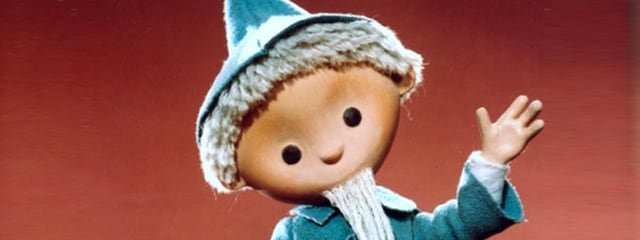The verb is interesting because it is conjugated based on the "sehen" (to see) part:
ich sehe fern. du siehst fern. er/sie/es sehen fern...
There are 2 other verbs that can also be used as "to see, to watch": gucken & schauen.
Gucken is also translated "to look," and in my family, we would like to guck' fern am abend (watch TV in the eveing). Schauen is also appropriately translated "to look, to watch". So we really have many ways to express ourselves if we want to watch TV:
Ich gucke gerne fern
Ich schaue heute abend fern.
Wir wollen fernsehen.
Do you have a preference or opinion??
Anyway....I was then thinking about all the television shows I watched as a child. Here are a few I remember well:
1. Sesamstraße - the German version of the show had some different characters than the American show (which, by the way, had a huge part of my learning English when I came to the States at age 4, along with Electric Company and good ol' Mister Rogers):
2. Die Biene Maja (The Bee Maya) - she has now hit the US scene with translations - but the original 1970s original version is all I know:
3. Heidi - The classic Johanna Spyri novel in cartoon form, one of my favorite. Of course, my mother's name is also Heidi, so I loved it that much more! :)
4. I think every evening in Germany, a short children's series called Die Sendung Mit Der Maus (the show with the mouse) was on - first on the channel WDR, then later on ARD (one of the main German channels, much like America's ABC, CBS, and NBC). It's catchy opening music will forever be embedded in my brain!
5. The same goes for the little cartoon Onkel Otto who accompanied the German commercial time (commercials didn't run between shows but all at once for a certain time period). He was the mascot of the Hessischer Rundfunk (hr) which is why his antenna formed an H on his head. Onkel Otto was a seal which is Seehund in German (literally sea dog). Cleverly, the writers of this cartoon combined the German verb fernsehen (to watch television) with Seehund --- and Onkel Otto was officially a Fernseh-hund.
6. On another channel (ZDF), die Mainzelmännchen entertained us during the commercial period. By the way, their names were: Det, Conni, Berti, Anton, Edi und Fritzchen.
7. Lastly, many an evening I was bid good-night by ARD's Sandmännchen (the sand man), whom parents relied on to remind kids it was time for bed! Each evening, he said, "Nun, liebe Kinder, gebt fein acht, ichhab' euch etwas mitgebracht." (Now, dear children, pay close attention; I have brought you something) --- and that something was a sweet little bed time story:
An interesting fact I just learned was there were actually 2 Sandmännchen - one used in the former East Germany (DDR) and one in West German (BRD) before the 2 parts of Germany were unified. I always knew the above "western" Sandmännchen as I grew up in Frankfurt ... but the Eastern Sand man looked like this:

Do you have any memories of your favorite German children's shows?




















































